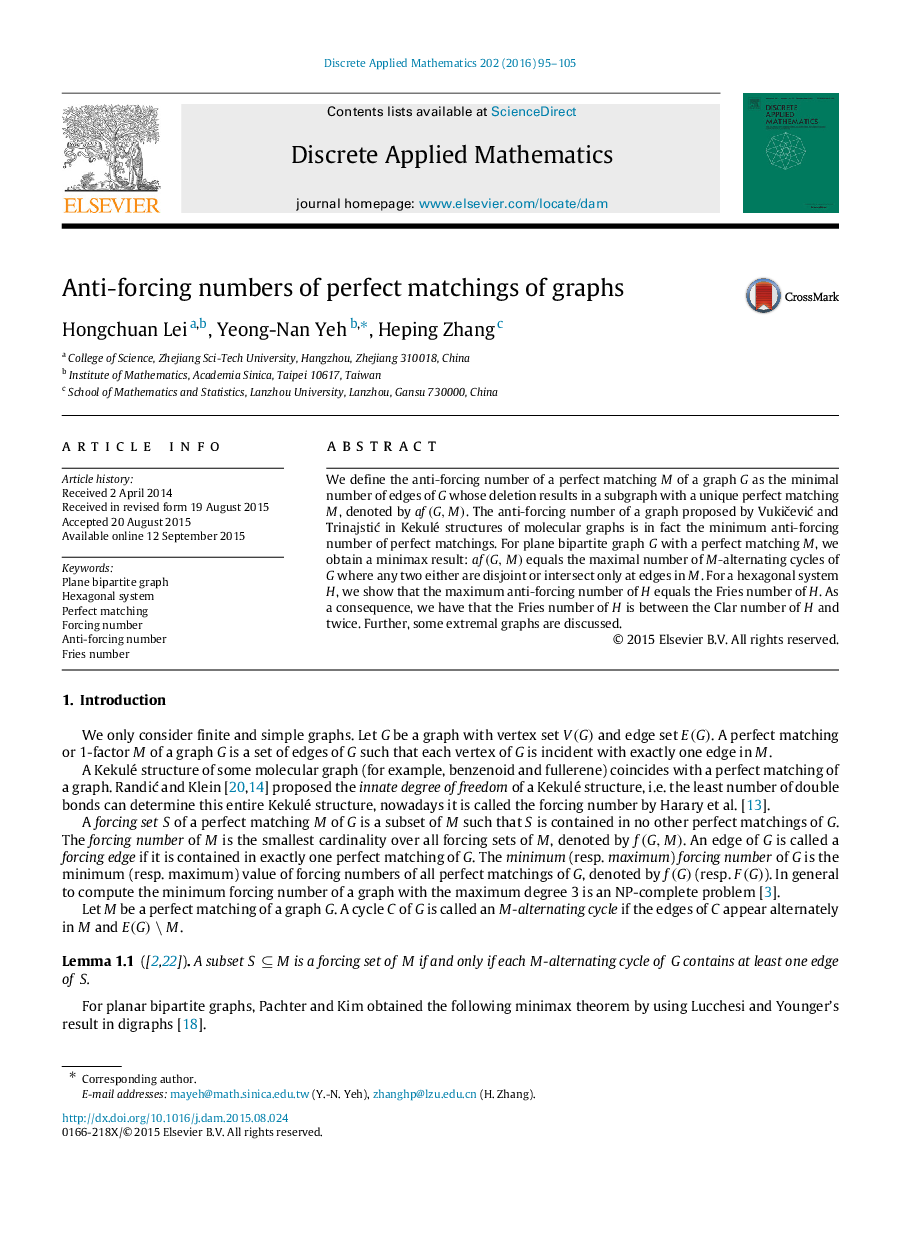| Article ID | Journal | Published Year | Pages | File Type |
|---|---|---|---|---|
| 419260 | Discrete Applied Mathematics | 2016 | 11 Pages |
We define the anti-forcing number of a perfect matching MM of a graph GG as the minimal number of edges of GG whose deletion results in a subgraph with a unique perfect matching MM, denoted by af(G,M)af(G,M). The anti-forcing number of a graph proposed by Vukičević and Trinajstić in Kekulé structures of molecular graphs is in fact the minimum anti-forcing number of perfect matchings. For plane bipartite graph GG with a perfect matching MM, we obtain a minimax result: af(G,M)af(G,M) equals the maximal number of MM-alternating cycles of GG where any two either are disjoint or intersect only at edges in MM. For a hexagonal system HH, we show that the maximum anti-forcing number of HH equals the Fries number of HH. As a consequence, we have that the Fries number of HH is between the Clar number of HH and twice. Further, some extremal graphs are discussed.
